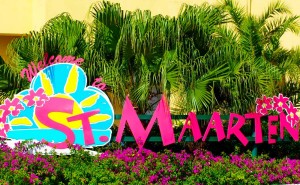Video Source: http://en.vacationstmaarten.com/
Brief History of St.Maarten/St.Martin
Throughout the history of many Caribbean Islands, most were home to various Indians. What we know as St.Maarten or Saint Martin was home to the Siboney and Arawak Indians. Most of the Indian tribes originated from the Orinoco river region in Venezuela. Before European explorers made it to St. Maarten, the Carib Indians migrated into the area and killed or took the majority of the Arawak Indians as slaves. When Europeans arrived, the island was in control of the aggressive Carib Indian warriors, as were several other Caribbean Islands.
Christopher Columbus never set foot on Saint Martin. However, on his second voyage in 1493 he did claim Saint Martin for Spain. On November 11, 1493, San Marteen (in Spanish) history states that Columbus spotted the island and named it after the saint’s remembrance day—Saint Martin of Tours. Spain may have listed the island in their list of territories; but they more or less left the island as it was instead of colonizing it.The French where much more interested in colonizing the West Indies than the Spanish where.
The Dutch West Indies Company also wanted to have the island under their control and was the first to originally start the European portion of St. Maarten history by setting up camps in 1631, starting with Fort Amsterdam. At this time, the Dutch West Indies Company started mining salt, and about this same time period the first governor in St. Maarten’s history was appointed: Jan Claeszen van Campen. Other settlements were scattered throughout St. Maarten belonging to the English, French, and the Dutch.
Spain attacked in 1638 and took over all the Dutch settlements. Spain was now in control and built the Old Spanish Fort at Point Blanche. The Dutch tried in vain to recover the island.
After the long battle between The Netherlands and Spain, Spain once again had no need for the Caribbean Island and left in 1648. St. Maarten history shows that both the French and Dutch were eager to gain control of this beautiful island and its magnificent white sandy beaches. An interesting footnote is that Peter Stuyvesant, soon to become Governor of the Dutch colony of New Amsterdam which is now New York City, lost his leg in a battle against the Spanish in St. Maarten.
Even though they had an agreement in hand, both sides still had a few squabbles about the way in which the land should be divided. As the history of St. Maarten explains, the boundaries were changed a total of sixteen times by 1816. The French have twenty square miles in the north and the Dutch have sixteen square miles in the south, both offering a unique and different St. Maarten/St. Martin culture to explore.
Like all countries, trying to develop into a nation with its own beliefs and culture, St.Maarten/St. Martin each had very different thoughts on many topics. Today, you will see a wonderful island that has grown independently on each side of the island making it one that is fascinating to visit with the diverse cultures side by side. St. Maarten/St. Martin culture is of course a nation divided, yet the differences have through the test of times watered down to more legislative differences than cultural differences.
An interesting footnote is that although the French and Dutch on the European continent in the beginning of the 19th century under Napoleon Bonaparte, who originally hails from Corsica, fought their wars, they never extended into the Dual Island Nation of Sint Maarten/Saint Martin and thus the Oldest Peace Treaty (Treaty of Concordia) in the World (almost 380 Years) still stands firm to today.

